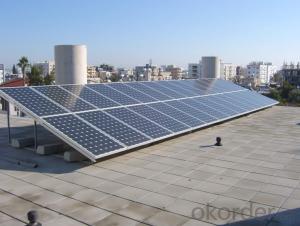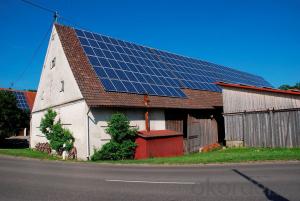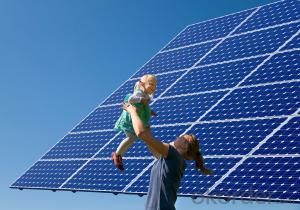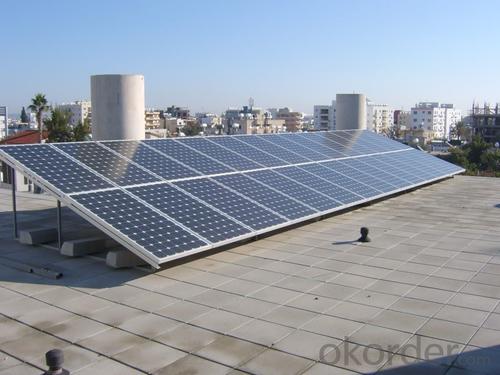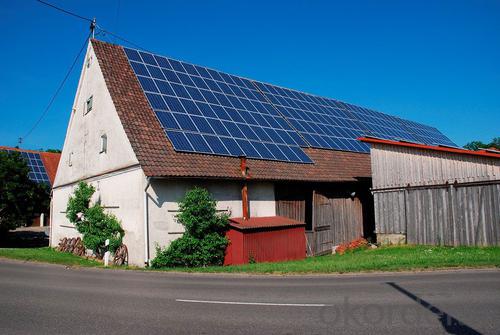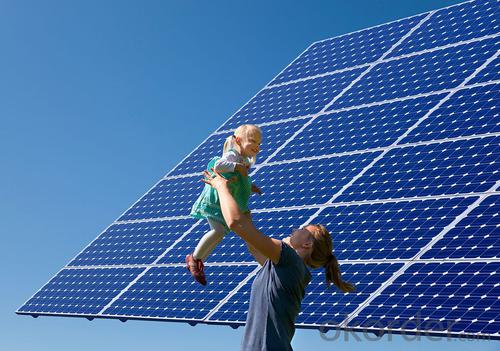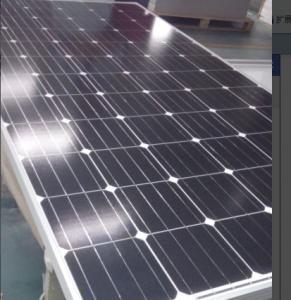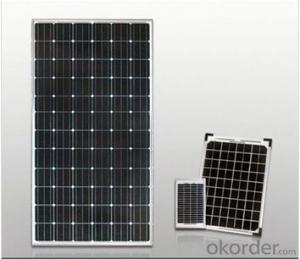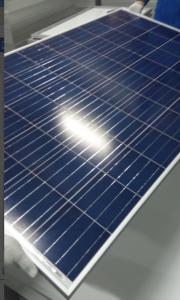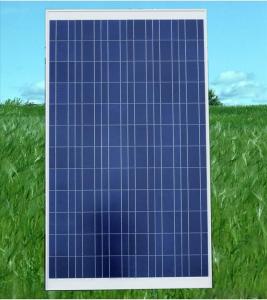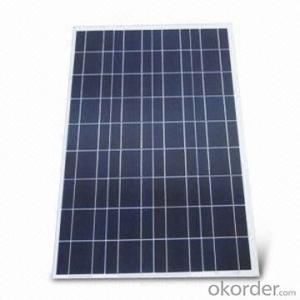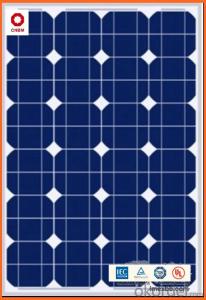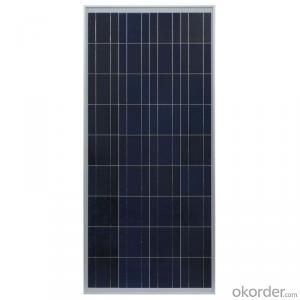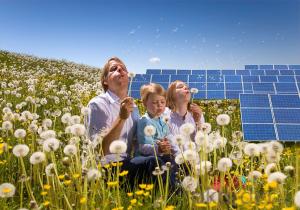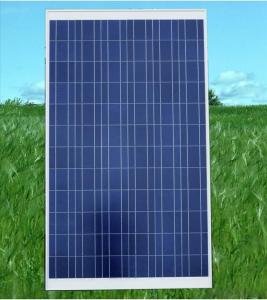300W Polycrystalline Silicon Solar Panels on Roofs for EU Market
- Loading Port:
- China main port
- Payment Terms:
- TT OR LC
- Min Order Qty:
- 100000 pc
- Supply Capability:
- 10000000 pc/month
OKorder Service Pledge
OKorder Financial Service
You Might Also Like
About us
CNBM International Corp, established in 2004, is the business entity for trade and logistic of CNBM Group.With the advantages in Cement, Composite Materials, New Building Materials and Engineering, CNBM mainly concentrate on coal, steel and construction equipments and give priority to solar and wind energy development.CNBM International is highly recognized by its business partners and clients all over the world and has established good business relationship with the customers in over 120 countries and regions all over the world.
As a solar brandoriginated from America (USA) with production bases in USA, China, Taiwan andVietnam, Amerisolar is taking more competitive strategies based on its Leading Technology, High Quality, No Anti-dumping Tariff prices and worldwide Door-to-Doorlogistics services.
Quality Certificates
IEC61215, IEC61730, IEC62716, IEC61701, UL1703, ETL, JET, CE, MCS,
CEC, Israel Electric, Kemco
ISO9001:2008: Quality management system
ISO14001:2004: Environmental management system
OHSAS18001:2007: Occupational health and safety management system
Amerisolar’s photovoltaic modules are designed for large electrical power requirements. With a 30-year warranty, AS-6P offers high-powered, reliable
performance for both on-grid and off-grid solar projects.
Key features:
Low degradation and excellent performance under high temperature and low
light conditions.
Robust aluminum frame ensures the modules to withstand wind loads up to
2400Pa and snow loads up to 5400Pa.
Positive power tolerance of 0 ~ +3 %.
High ammonia and salt mist resistance.
300w with high module conversion efficiency and high quality. Meanwhile all panels have positive power tolerance of 0 ~ +3 %.
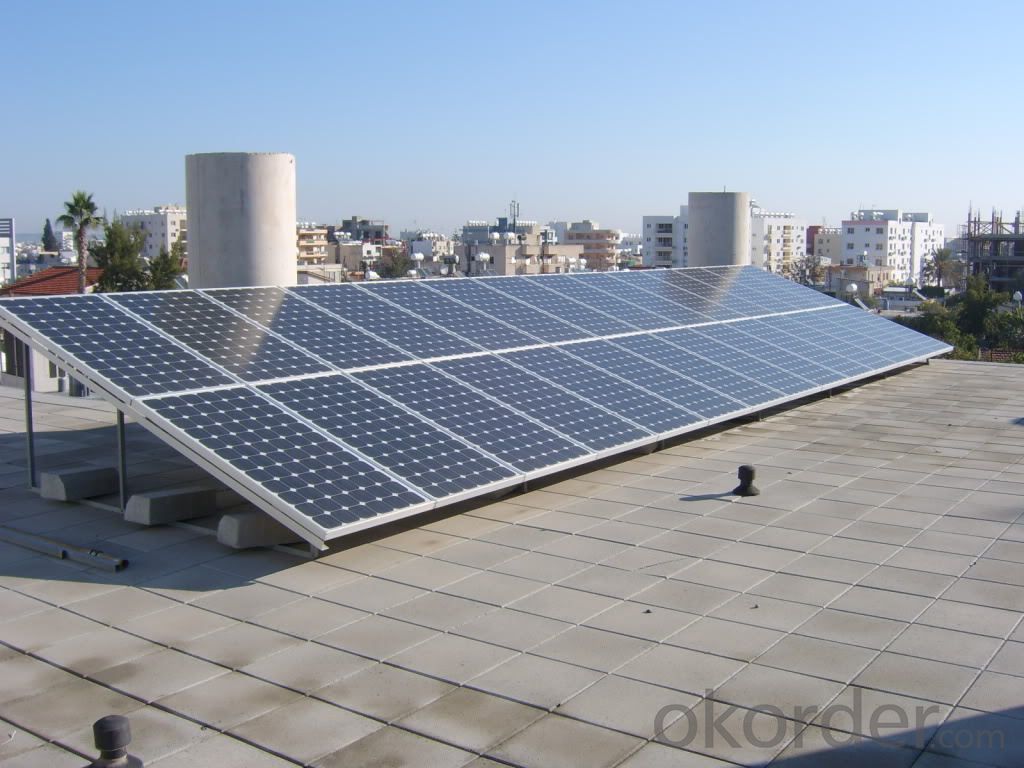
FAQ:
1. How long will my inquiry get response?
Your inquiry related to our products or prices will be replied within 24 hours.
2. Can I get professional service and suggestion?
Well-trained and experienced staffs to answer all your questions in fluent English.
3. Do you accept OEM or customized design?
OEM & ODM, any your customized lightings we can help you to design and put into product.
4. What if I need specific design?
Distributorship are offered for your unique design and some our current models.
- Q: I have several 6v 4.5a sealed lead acid batteries. I would like to hook one of them up to a solar panel and have it stay charged from the solar panel all the time, but not overcharged. Is there a simple way to do this with an IC or something? I am only a beginner with circuits so I want it to be something very easy to make. Basically, I want it to stay charged all the time so it's available if I need it for a power out or something.Thanks.
- Yes, you can purchase a solar photovoltaic array to keep your batteries charged. You will need a Photovoltaic Cell Panel that produces 27 + watts (6volts x 4.5 amps = 27 watts) at 6 volts of electricity, a Charge Controller that allows only 4.5 amps of power through to the battery and will reduce the amps as the battery nears full charge and shut off the Panel when the battery is fully charged, and a 6v. Battery. Figure you will need a photovoltaic panel capable of producing a minimum of 27 watts if you are going to charge a completely dead 6 v. battery in one day. (with a clear sky). The way the system works is the sunlight strikes the cells on the panel and releases the excess electrons in the cells, they travel along central wires to your battery and charge the battery. When the sun sets, the procedure is reversed and the electrons flow backwards from the battery, into the photovoltaic cells. That is where the Charge Controller is needed. It acts a one way gate and lets the electrons go into the battery, but won't let them go backwards to the Panel. Just set your panel in the sun at the optimum angle for the season and your latitude on earth, connect the charge controller and then the battery, and it will keep your battery charged. Don't waste your money on the small wattage solar photovoltaic systems that claim to keep your battery charged. They simply can't do it unless your battery is in like new condition and is fully charged when they are hooked up. If you battery is a few months old, the small wattage photovoltaic systems can't keep up with the loss of power from sulfation inside the battery.
- Q: I have to get a lot of information on how solar panels are developed and distributed in America because I have to do two pages on this. Please help me get information in this I really need it!! Thankss...
- The first link below is one of the best sites for recent news about solar panels. You should be able to find stories about solar panels under development today. A little bit of the history: Solar panels have been around for about 50 years now. They were first used to power spacecraft. Solar power for domestic use started to develop rapidly in the 970's during the first oil crisis, but as energy prices fell in the 980's solar development slowed. Most of the large solar panel makers were purchased by large oil companies who seemed not to be too interested in solar. In the late 990's as concerns about both Peak Oil and Global Warming grew there was renewed interest in solar power and a number of new companies were started to develop new kinds of solar panels. Many of these new companies have grown larger than the older solar companies still owned by big oil companies. Over the last 7 years or so growth in the solar market has been explosive with a compound growth rate of almost 40% per year. In 2005 the solar industry for the first time started to consume more silicon than all other electronic industries combined resulting in a world wide silicon shortage that is still with use. New silicon refineries are coming on line and the shortage is expected to diminish by 2008 or 2009. Check out the two links below. They will help you a lot.
- Q: Can solar panels be used to power air conditioning or heating systems?
- Yes, solar panels can be used to power air conditioning and heating systems. Solar energy can be converted into electricity through photovoltaic panels, which can then be used to power these systems. However, the effectiveness of solar panels in powering air conditioning or heating systems may vary depending on factors such as the size of the system, energy requirements, and the availability of sunlight. It is also common to use solar thermal systems for heating purposes, which capture the sun's heat directly to warm water or air for heating systems.
- Q: I've run out of things to keep me entertained recently and as part of a larger project, I was curious if its possible to 'McGuyver' up a solar panel out of common materials?
- It okorder /
- Q: Can solar panels be used in areas with frequent power outages?
- Yes, solar panels can be used in areas with frequent power outages. Solar panels generate electricity from sunlight, so as long as there is sunlight available, they can continue to produce power even during power outages. Additionally, solar panels can be equipped with battery storage systems to store excess energy generated during the day for use during periods of low sunlight or power outages, making them a reliable source of electricity in areas with frequent power disruptions.
- Q: Can solar panels be used in areas with high levels of shade?
- Solar panels can still be used in areas with high levels of shade, but they may not be as efficient as in areas with direct sunlight. The shade reduces the amount of sunlight reaching the panels, which decreases their overall performance. However, with advancements in technology, some panels are designed to handle shade better than others. Additionally, proper installation and placement of the panels can help optimize their performance even in shaded areas.
- Q: How do solar panels impact the roofing material's lifespan?
- Solar panels can actually extend the lifespan of roofing materials. They act as a protective layer, shielding the roof from various weather elements like UV rays, hail, and rain, which can cause damage over time. Additionally, solar panels can help regulate the temperature of the roof, preventing excessive heat buildup that can accelerate the degradation of roofing materials.
- Q: Just curious.
- Since you said does instead of do I think it would be fruitless trying to explain it...
- Q: Can solar panels be installed on a high-rise building?
- Yes, solar panels can be installed on a high-rise building. In fact, high-rise buildings can be ideal locations for solar panel installation due to their height and large surface areas. By utilizing the available roof space, high-rise buildings can generate significant amounts of solar energy, helping to reduce their reliance on traditional energy sources and lowering their carbon footprint.
- Q: Can solar panels be used to power a space station?
- Yes, solar panels can be used to power a space station. In fact, many space stations, including the International Space Station (ISS), utilize solar panels as their primary source of electrical power. These panels convert sunlight into electricity, providing a sustainable and renewable energy source for the space station's various systems and experiments.
Send your message to us
300W Polycrystalline Silicon Solar Panels on Roofs for EU Market
- Loading Port:
- China main port
- Payment Terms:
- TT OR LC
- Min Order Qty:
- 100000 pc
- Supply Capability:
- 10000000 pc/month
OKorder Service Pledge
OKorder Financial Service
Similar products
Hot products
Hot Searches
Related keywords
